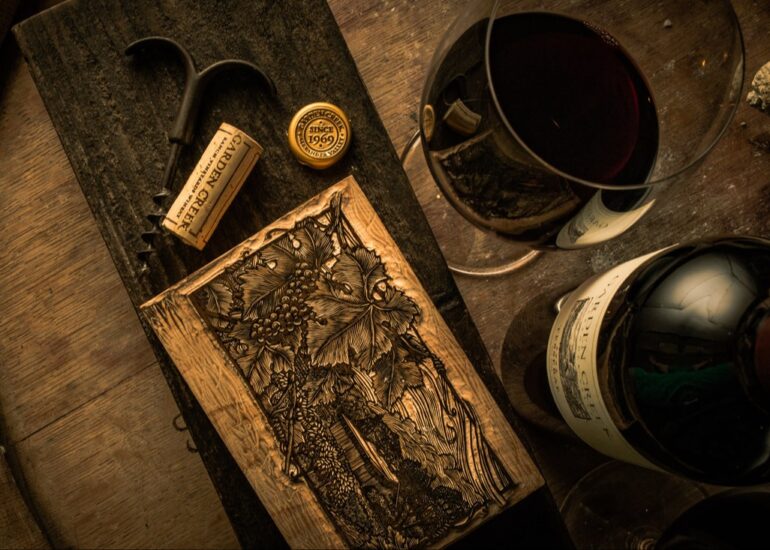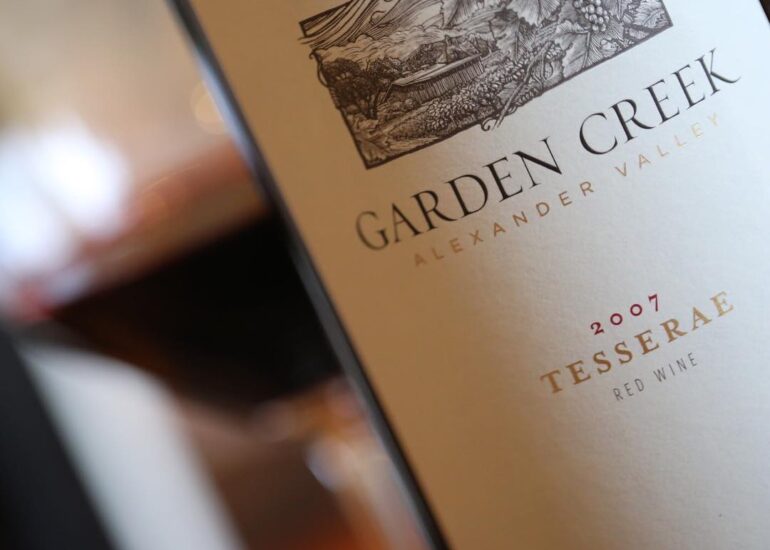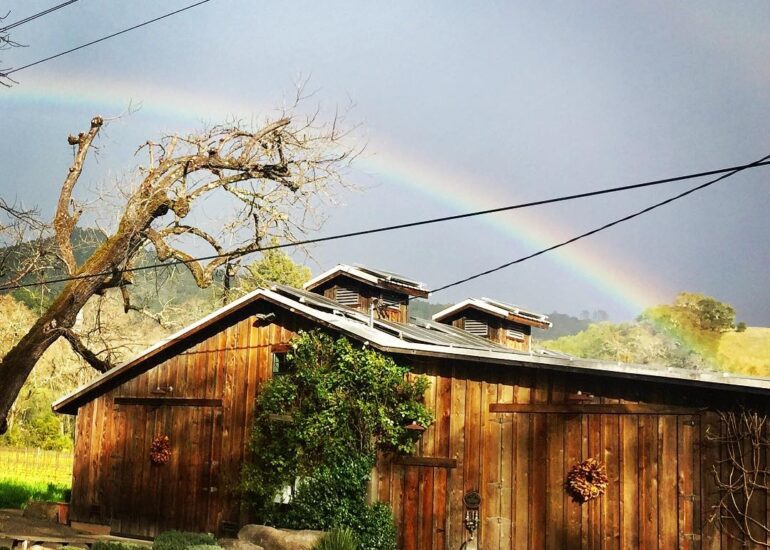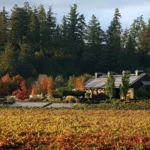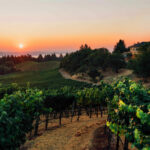A Garden in Geyserville
Winemaker Interview
A Garden in Geyserville
A conversation with Karin and Justin Miller of Sonoma's Garden Creek Vineyards
Boutique Producer Gives Voice to the Rustic Elegance of Alexander Valley
An Interview with the Proprietor Winemakers of
Garden Creek Vineyards
When we think of a garden, we’re likely to imagine a small plot of land that’s meticulously tended to and lovingly cared for — a testament, really, to the connection between person and plant. Albeit on a slightly larger scale, it’s with similar attention to detail and devotion to nurturing that Karin and Justin Miller look after their own garden: the vineyards of Alexander Valley’s Garden Creek Vineyards. I’d first met Justin at Sonoma County’s Best of the Boutiques wine tasting event, where I was immediately struck with a palpable sense of his passion for the land and dedication to articulating its message through the handcrafting of superpremium wines with spellbinding depth and seductive complexity. Some time thereafter, I sat down with the couple over lunch in the comfortable and candelit interior of their ranch house to talk about their vines and wines, and in doing so, discovered a singularity in their approach not only to winemaking but to living life as a whole.
Engaging the Millers in person, surveying the lay of their land, tasting the fruit they produce from it — I found one common thread running though it all: serenity. As individuals, both Karin and Justin exude a gentle composure and disarming ease, which I quickly learned also extends into the tending of their vines and crafting of their wines. Arising from a deep sense of respect, even reverence, they hold for the complexity and interconnection of nature’s patterns and processes is a keen understanding they seem to have with the land under their care. It’s one that acknowledges that we, as humans, share the environment and its resources with the flora and fauna around us. In practical terms, it’s this very belief system that underpins their conscientious implementation of organic and sustainable practices — but to a holistic degree seen rarely among their peers. The end result is an approach that imparts their vines with balance and harmony, and instills their wines with grace and elegance. In talking with them I learned how it all began and how it manages to sustain its magic and allure.
— Nikitas Magel
Following are edited excerpts from the interview. At the bottom of this post is the full recording.
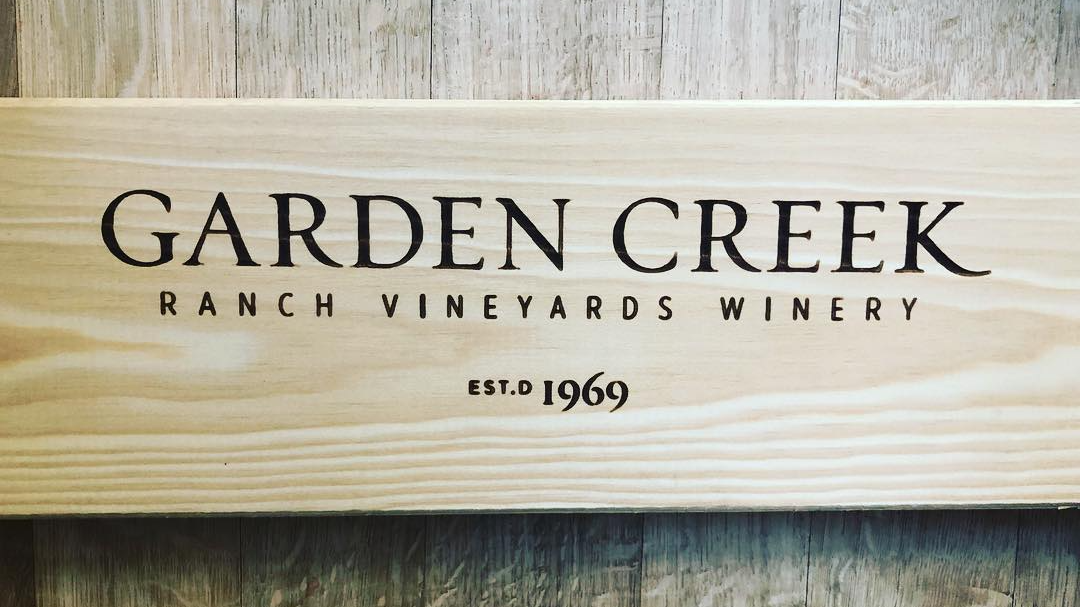
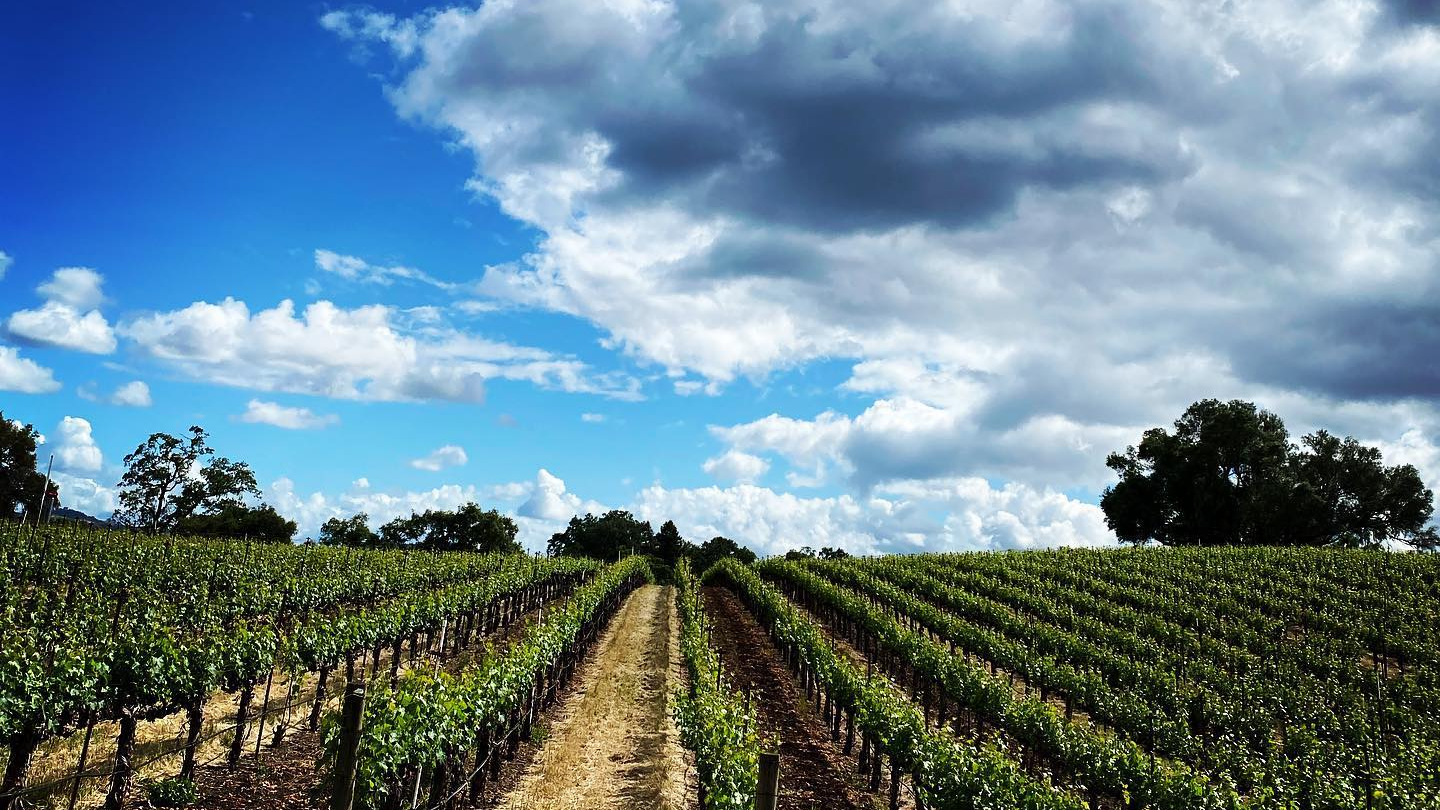
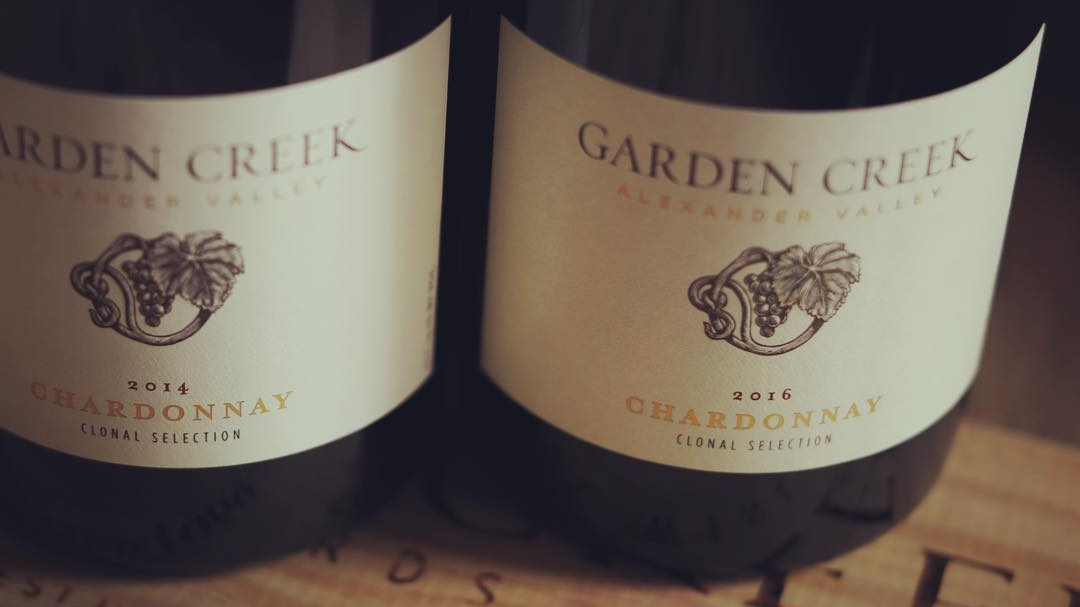
Harmonizing the Terrestrial and Ethereal
Nikitas Magel: Garden Creek began with your dad. Can you talk about his vision for the winery, what you’ve continued from his legacy, and how you’ve changed direction from that?
Justin Miller: My father was in school down at Cal [Berkeley], studying landscape architecture back in the late ’50s. And that was when he started coming up to Sonoma County, poking around, because he knew he wanted to buy a piece of land somewhere. He visited this particular property here, Garden Creek, in 1958 and fell in love with it. His friends at school thought he was nuts for coming up here, because this was old-cowboy country; there was really nothing happening here to put it on the map yet. But he decided to purchase the property and make a go of it. He was running sheep and cattle at the time on the upper ranch, while on the lower ranch, he had prunes, and I think there was maybe about three or four acres of Zinfandel and some Grenache down there that went to Simi [Winery]. So that was how he got his feet wet with the whole wine thing. Although [people from Simi] came out and pruned and picked it, he had a little bit of a hand in growing the grapes. Then in about 1962, Robert Young and my dad had been talking about planting grapes, after learning of the research going on at [University of California] Davis, figuring they could make a little more money than growing just prune trees. So, he started planting Cabernet Sauvignon on this [upper] ranch, and then slowly converted all the prune trees into vineyards on the rest of his property. By the early ’70s, we had 20 acres of Pinot Noir and 20 acres of Gewurtztraminer down on the lower ranch. But the upper ranch has always been Cabernet because this is a good site for it.
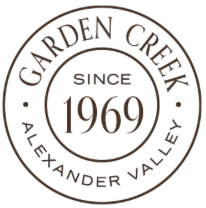
Back in those days it was definitely the line of conventional farming. They sprayed everything to the ground and disked everything under. Any bare weeds showing in the vineyard or anything that was green, other than grapes, was not wanted. [The attitude was that] it all had to be removed. And the chemicals they used for dealing with pests were the sort that if you sprayed it, it died. That’s what everybody did; nobody really questioned it. But that conventional thought only goes so far. When I took over the vineyards in ’95/’96, I started playing more of a role in the viticultural side of the ranch. I took a direction to go 1) sustainable — which is blatantly obvious; that’s what everybody should do, and 2) organic, to start composting, to take a lighter path in the vineyard, not have so much mechanization out there — not disking so much, not mowing so much — just letting things fall into balance.
NM: You were relatively young when you decided you wanted to do things differently in the vineyard. What was compelling you to take that much gentler direction? After all, as it turns out, it was actually quite progressive; you were thinking ahead of your time.
JM: Well, I think there’s always one side of you where if your parents do it one way, you want to do it another way, and where you’re going to fight them tooth and nail: “I’m not doing it that way; I’m doing it this way!” I think that was inside of me, perhaps latent. But also, [taking that different direction] just felt right, it felt healthy. It didn’t seem right to be using chemicals on a piece of ground that you want to keep in your family for generation after generation; it seems you’d want to clean that up.
KM: It seem to me, also, knowing you and what you were doing at that time in your life, that your inspiration was that book you had read, Sunlight Into Wine. You talked about that for a long time! It was something very fresh and new in the world of wine for a while.
JM: Yeah, in conjunction with [University of California] Davis, the author [Dr. Richard Smart] extrapolated all the viticultural data they had gathered up until that point, and wrote a very simplified book on how to grow grapes. And one of the biggest things that caught my attention in that book was that grapevines are probably the hardiest plant in the world. They’re extremely simple to grow. If you can’t figure out how to raise a grapevine and keep it alive, don’t plan on farming anything else! So, with that in mind, I wondered, “Why do we spray all the weeds on the vines? Why do we cultivate? Why are we so worried about the ‘competition’ on a vine’s root system?” I thought all that’s a [rather] great way to create diversity in your soil and your area. That’s when I really made the shift, coming from a conventional side of farming, to just allow things be the way they are. If you’ve got certain areas that grow different grasses because it’s a different soil type, just let it be. That’s what you want to do, rather than always trying to homogenize everything out in the field; let it be diverse on its own. That was a major point for me. Also, I was studying some metaphysics, too, and learning that plants are living beings who are no different from you or me. One book I’d read was called the Secret Life of Plants. After reading that book — I was 16 or 17 — it really dawned on me: they really are no different from [us].
NM: What I hear you saying, to put it in spiritual terms, is that there’s not only an abstract, but a palpable connection between plants and human beings.
JM: We wouldn’t be here without them! And they’re older than we are, too; that’s another thing we have to remember. Plants are absolutely amazing; they move and change at a very slow pace. Whereas humans adapt extremely rapidly. Just the ability for a plant to adapt to a change in environment is absolutely fascinating to me, how they can do that.

NM: Being that you were so young and it was during a time well before general attitudes changed in wider support of natural and more gentle treatment of the environment and the life within it, it sounds instinct was leading you. Can you say a bit more about that?
JM: My instinct was telling me basically that fast food, for example, is not something I should be putting in my body. While the idea of consuming healthy, locally grown produce just touched me. It felt right, it felt like that’s what I should be eating; not the food that’s been imported from halfway around the world and trucked in two days from Texas. That didn’t feel like I would be eating something that belonged in my system. So, with that in mind, I changed my whole philosophy behind farming to be natural, go with the flow, and let it be — and not try to find absolute visual perfection in a vineyard. You can manicure yourself to the tee and look better than anybody else out there, but it makes you nervous, it makes you tense, when you’re all fancied up and going somewhere. To me, it’s the same: when you’re a vineyard that’s really wholesome and moving at its own pace, it’s comfortable, it’s balance. Sure there are imperfections, a weed here and a weed there, but it’s healthy. Of course, that’s not to say that we don’t strive for perfection in our field with vine balance and all that stuff, but we do take the approach of being healthy.
Balancing Depth and Breadth
NM: I see you as the caretaker of this land, as the bearer of the message that it has to convey. Being in that role, how do you balance the passivity of allowing the land, vineyard, and grapevine to be as they want to be, with the activity of coaxing, directing, and facilitating it all in a particular direction?
JM: I think maintaining balance is key. And that’s basically a balance in the vine, with its maturity and health of the fruit. What Karen and I want to find in our wines is really having a feel for the land and a feel for the area around us, how it speaks to us and how we move through it. We were both raised making wine from this area as kids, so it’s in our blood — picking, crushing, fermenting, barrel-aging, bottling, and all that is innate and intuitive [for us]. With that, when we started making our wine, we thought, “Hey, this is not a garage-operation project anymore; this is something that’s going to be a polished, high-end product that we’ll want to share with people who are interested in it.” So, we decided to farm these grapes with the best possible quality that we can pull off of them, and by doing that we knew we’d have to pick vine by vine and area by area.
But getting back to your question, we’re really trying to isolate all the little nuances in the vineyard. I don’t care who you talk to, but if they tell you they’ve got six acres that’s totally homogenous with every vine tasting the same as every other — that is not the case! Even if its perfectly flat; there are different subtleties in the soil underneath each vine that change the quality and taste of the fruit. Karen and I are really trying to extrapolate on that and go out and pick those little spots that taste to us like the best fruit, like what were looking for. And then we’ll continue for four or five vines and then when [that flavor profile] starts to taper off, we’ll stop there. So we’ll pick these small lenses [of flavor in the vineyard]. The dirt looks the same under all the vines; it doesn’t look any different from the dirt two or three hundred feet away.

But the flavors in the vines are different. It’s amazing how much variability exists in a vine row, especially if you go up, over a hill and down the backside; it’s amazing! And if you could take all those little pieces, pick them, and ferment them all separately, tweaking every fermentation based on what you taste in the individual lot of fruit and what you feel you need to do with it, then the amount of complexity you get in a wine is amazing! Whereas a larger [producer], who’s got to pick 20 tons of fruit and put it all together into one large fermentation probably loses some of the complexity available from the field.
So we keep all those lots separate — each about a ton to a ton and a half — from fermentation, through ML, then in barrel, until we start comprising our blend. Doing that really allows us to know what’s going on in our vineyards every year. But we don’t necessarily take from all of those spots [to make the final wine]; every vintage is different — whether its a hotter year or a cooler year. So it really allows us ultimately to make a wine that we dance and flow with every year. And it feels right: if you’re going to make a top-quality product, you want to be able to pick the vines that are speaking to you.
KM: We have thirteen tanks, so we can have a lot of tanks fermenting at once. It’s a lot of work doing it that way, but that’s what allows us to do what we do with this wine. It gives many more layers to it, and it allows a lot more creativity, too.
JM: Karen and I just love being minute with that stuff. It’s a lot of fun and it’s passion-driven. I think that’s the most important part for Karen and I, to keep it small, where we wake up every day and we’re just excited to go up and see what the wine is doing, see how it has evolved. There are times it’s 1 a.m. and we’re still working in the winery; we’d be so into it!
KM: It doesn’t feel like work. Work, to us, is selling! {chuckling} Making the wine is easy!
JM: So, ultimately, we finish making our wine and have an end product — a component that came off of our land with our creativity [after having] coaxed it using the tools that mother nature gave us. I think every year it’s a challenge to try to create something as good, if not better, than the previous vintage, but [we always ask ourselves] what we can do to make it better.
Understanding the Unspoken
NM: You mentioned that the vineyard speaks to you. I think that’s actually what everything you’ve described hinges on, this dialogue between you and the vines. In your own words, what is the message that the vines are giving you?
JM: While I don’t really take it as they’re literally speaking to me, I do feel it; I feel my surroundings. I think when the vines are happy or in tune with you, you’re harmonized with them — or whatever plants or trees it may be, whatever your passion is. You can get a sense of balance out there: are these things too vigorous or are they struggling? You can feel it when you’re amongst them.
KM: It is a silent communication. A big advantage he has is that Justin walks the fields and he knows what’s going on in all the different corners, what the rows are doing, what the hillsides are doing. He’s always out there, whether on the four-wheeler or actually walking.
JM: Plus, I was born and raised on it as a little kid. I spent years working on all the bad areas of dirt and the good areas; you get a real sense of falling into sync with what’s going on around you. And like Karen is saying, a lot of farmers use a lot of tools to measure things like weather data, soil moisture, leaf temperature — there’s all sorts of information they can pull off a vineyard to know whether or not to do something. But a lot of that is fear-based.

KM: It’s a matter of intuition. But human beings have been taught to not trust intuition. Here, we make our wines, as Justin explained, very intuitively: we extend things out, let it be, trust that it’s going to be okay, and let the wine speak back to us.
JM: Of course, there are definitely boundaries that you don’t want to let it fall out of. There are certain things you definitely don’t do. But there’s a style of taste and aromatics, and a feel for things like punching down, aerating, and trying to pull different flavors and components out of the fruit for that vintage. I feel you can make wine in a bazillion different styles and different ways; it comes down to personality.
NM: I want to acknowledge and perhaps even deconstruct what I hear you saying: your philosophy, not only in the making of wine but also in living life in general, is to practice looking inwardly to best understand what’s going on outwardly. That’s inherently non-empirical. And there is a lot of people, especially in the practice of making wine, who would have a problem with that kind of thinking. They may feel that modern winemaking has moved away from that sort of thing because it can open up problems, due its lack of control and precision, and makes the process vulnerable to the entropy of nature. How would you respond to those naysayers?
JM: That’s a big question. It’s the same for me, looking up at the solar system at night: “Wow, what is all that?” We’re really just a finite little blip on a map, in the grand scheme of it all. I find that extremely humbling, and bringing that to what we do here today is what keeps the ‘wow’ in it, keeps us striving to figure out what it is that we’re smelling and tasting, what becomes of it.
KM: That’s also why we want to keep it simple. We want to be able to live this way — we don’t want to grow so big and so fast that we can’t be so creative. We’re still less than a thousand cases; today, we’re at about 700 cases.
JM: It keeps it in the abstract, rather than focused entirely on the production side of things. We’re free to do what we want here, based on how we feel and where we want to go. When you’re production-focused, you put yourself into a whole other gear: you’re moving a lot faster, you’ve got to keep a lot more people happy, and there’s really no sense of letting your wines be, letting them show up at their own pace, and feeling comfortable with that. You get yourself into a position of, “We need to sell X amount of wine per month, otherwise it’s not going to work,” when you get to a large scale of production. And I think with that, your winemaking changes, too. We’re extremely lucky in that we can keep all these little fermentations going on their own, independently. If one goes bad, it’s not going to kill us.
For a big producer, when you have 20 tons of fruit in a tank, you’re sitting on $40k-$50k worth of fruit before it’s even fermented, and your strategy for getting that stuff dry and clean as a polished product is not going to be very abstract, by any means! [In that case] you want to use a clean yeast that doesn’t produce a lot of VA and doesn’t ferment fast or get stuck on you. So, I think that’s where the smaller guys can be creative, while the bigger guys are [limited to being just] a production facility where they might use a little bit of that creativity, but for the most part it’s managing risk — like in a large company. That’s what it boils down to. But I don’t look at most of these modern winemakers as doing anything wrong or bad. I just think that there’s a lot of money on the table, there’s no room for error, and they’re just trying manage their winemaking styles in a very low-risk environment.

Making Choices, Taking Chances
NM: Clearly, you follow your intuition in the making of your wine. But let’s look at the more technical and pragmatic aspects: are there concrete practices and procedures that you feel very strongly about — in the vineyard, but perhaps more so in the cellar?
KM: It seems like the number one piece is cleanliness. Justin keeps that winery so clean, and that helps keeping the fermentations going and such.
JM: I think that being involved with the grapes from the very beginning to the end product of the wine, and sharing that with the people who visit and buy it. My problem is that I try to do everything. I want to be part of every single process that takes place, and sometimes that’s too much. But I think that’s one of the most important things that Karen and I live by: if we’re going to do this, we’re going to do it from top to bottom on our own. We make the decisions all the way down the line. And I think that’s one of the most valuable things that we both share together. In the vineyard, we pick the fruit when it tastes perfect to us, when it tastes right on our palate; we don’t look at the chemistry of the fruit or the juice. We rarely even look at the chemistry until the wine is done with primary fermentation. One thing that we do believe in is taste, to believe in our taste and our palate out in the field or when we’re making decisions in the cellar — Do we do another punch down or a little bit of aeration?… Where’s the tannin going?… Do we want to slow that process down?… Is it getting too tannic? — taste, taste, taste! Whereas with the chemistry of wine, I think you can scare yourself easily.
KM: But you have to know the rules in order to break them. We follow our wines and look at the numbers at certain points. Also, you need to know how far you can go outside of that, and where you feel comfortable.
JM: I think it’s all extracting what’s in the fruit and what comes out of the vineyard based on the winemaker’s style. There’s a lot of fruit in the [wine] world and a lot of the little nuances and beauties in it get missed; they’re not fully extracted. That’s exactly what we learned making wine side-by-side with friends in the past. You can find huge differences between wines even when the same fruit is used but different techniques are implemented.
NM: That’s pretty astonishing! To what do you attribute such a vast difference in wine style using the same exact juice?
KM: It’s winemaking — totally, completely, and utterly winemaking.
JM: Yeah. We do all native fermentation, so we don’t add any commercial yeast. The only yeast we do add is to our Chardonnay, where we have one-third native and two-thirds are comprised of a few different special commercial yeast strains.
NM: Well, now, that’s interesting! Because the use of primarily native yeast, as you’re well aware, is not at all typical. It’s a choice and, some might argue, an unorthodox one at that. Tell me about the thinking behind that choice.
JM: We feel that a native fermentation adds much more complexity to the wine. That’s how we feel; there may or may not be truth to that. I don’t know if a guy could use commercial yeast and come up with something even better. I don’t know. Using native yeast, we feel like we’re being true to our terroir, true to our site. We want to make a wine that is unique to our soil, our vines, whom we are, the climate that we’re in, etcetera. To do that, one of the things we do is let fermentations go naturally. Does that mean that there’s no commercial yeast involved with it? I think there is, because you’re in wine country where wine is fermenting everywhere and yeast is floating in the air.

But I think that what happens with any native fermentation — if you’re in a really clean winery that doesn’t have a lot of commercially propagated yeast — is that you’re going to get a much, much more diverse fermentation, because you’re going to have all these different families of yeast starting to ferment in the beginning. The weakest ones die off, strong ones propagate, and then the stronger ones take over the weaker ones. You get this chain that builds up until the last couple of dominant strains of yeast finish the fermentation out. And within that curve, I feel you get many more complexities and nuances that show up in your wine because of that. But with that, I think some winemakers would say that there’s no such thing as a native yeast; you’re just using a yeast that’s floating around within the industry. They don’t feel that going native in a fermentation is going to make that wine any better than going with a commercial yeast that they choose.
NM: Okay, so instead of ‘native’ yeast, let’s just call it ‘ambient’ yeast. Other than the use of ambient yeast, are there any other winemaking practices that you feel produce the results that you’re most pleased with, and which your neighbor perhaps might not?
JM: Extended cold soaks are another thing Karen and I do. We’re cold-soaking some lots for two weeks before we let them warm up and start to ferment. And we do all our fermentations with whole-berries; we don’t crush them. We get all those berries into a tank, adding about 150 pounds of dry ice per ton in order to get those tanks chilled and sparged down with CO2 to remove as much oxygen off the fresh fruit as possible (the more oxygen you get on that juice before it starts to ferment will oxidize it and make it lose fruit freshness, nuances, and aromatics). In that process we hold [the berries] in tank for one to two weeks, and punch them down about three to four times per day to fully macerate the fruit.
In doing so, we’re breaking up the skins gently in the juice in a non-oxygenated environment, extracting as much color and flavor that we possibly can off of those skins — all before we start the fermentation. Karen and I have always felt that when fruit is really cold in a tank, just cold berries and juice, you can get away with really beating those things up! I mean, you can beat them up hard, and you don’t get the harsh tannins. As soon as you start the fermentation and allow it to warm up, if you beat up the fruit too hard then, you start to extract some pretty serious tannins. So the cold soaking allows us to extract a lot of depth out of the fruit before we start the fermentation.
Once we get to the fermentation stage, we’ve already got all the extraction we want, so we take the yeast and say, “Hey, you know what, you guys? You consume the sugar, and we’ll manage you with some air and some pump-overs to build the tannins right where we want them.” And in most cases, we get the tanks down to 2 brix, then we close them up and let them sit; we don’t even touch them after 2 brix. The wines then goes dry on their own, the cap sits on top, and we let them go through an extended maceration. This is all done instead of starting the fermentation immediately and worrying about extracting a bunch of color in the first two days before it really gets going.
NM: You mentioned pump-overs. Isn’t that a harsher technique?
JM: Well, let me clarify what our pump-overs are. We do a gravity splash. So, in a traditional pump-over you usually have a splash cart underneath the tank, the wine goes into the splash cart, aerates a bit, and then gets pumped to the top of the tank and over the cap, breaking the cap up. Karen and I use little transfer tanks that are stackable. So when I speak of a ‘pump-over,’ we lift the tank up in the air, put an ’90’ on it, open the valve that splashes down into the splash cart (which is about 100 gallons), fill the splash cart up, set the tank down, lift the splash cart up over the top of that tank, open the valve up… So we’re not using a pump; we’re using gravity.

NM: So it’s technically not a pump. But might not one argue that even the gravity splash, although to a lesser degree, is still rough on the fruit — as opposed to allowing the entire tank to just be, and periodically submerging the cap gently?
JM: Yes, definitely so. But what we’re also doing is keeping air on the yeast. All fermentations (besides whites), if you’re going to have skins in there, are going to get warm. I think it’s really important to keep a healthy, clean-smelling fermentation. I don’t know if you’ve smelled tanks that smell a little funky or rotten-eggy — what we call ‘reduced’ — no good! You can walk into the winery and when one of those guys starts smelling a little funky, you smell it immediately! I’ll go hunting down for which one it is, lifting the tops up, then find it, pull it out, give it a little bit of air, and in a few minutes it smells clean again. Everybody makes wine differently, but I think keeping a clean, healthy, fresh fermentation plays a very important role.
Karen and I always feel that when you pull wine out of a tank [after fermentation], you want it tasting so good then that you could put it in a bottle and sell it. That’s always been our philosophy: taste it, taste it, taste it. When we do extended maceration, when it’s down fermenting, we get it down to about 2 brix, we argon the top, we do a few other things to make sure the cap stays sterile (a few tricks in our bag), and then we let that tank sit. It may sit for a month, two months, maybe beyond that. And we taste it every couple of days. Then all of a sudden it hits a spot where it’s like the wine tastes as if it’s been [aging] in barrel for a year! — not so much with the components of oak, but it will have a smoothness and silkiness to it. And at that point, we drain it off and go to barrel. Sometimes malo-lactic has taken place in the tank, and sometimes it hasn’t. We do malo-lactic natively, too. And again, the one thing that sticks out to Karen and I the most is keeping a wine really fresh and really clean. That’s so important. It comes back to being with your wine all the time. But not doing so much of that to where it’s a burden — just enough to where you’re making decisions that keep a wine at a healthy level so that you don’t have to use so much sulfur [dioxide] to fend off problems that you could have otherwise avoided in the beginning.
Lessons in Life, Lessons in Love
NM: So, clearly you’ve learned a few things that you put into practice to make better wines. In that process, what have you learned to make a better you? If you were to describe the one thing about making wine that has really shaped your life and your attitudes about life in general, what would you say?
JM: I immediately think, Patience. I’m dealing with a product that I’m taking from the vineyard to the bottle. Being patient with it, waiting with it, watching it develop, and extrapolating that into the next vintage that we produce… You can make wine for thirty years straight and still not have it all figured out. Karin and I will be learning in this process forever but one thing is for certain, once these wines are put into bottle and age we can only watch and learn from that point on. This is the humbling patience that gives us perspective as we age too.
KM: And also within the wine growing world, when you start making wine it completes the circle. Because when you grow fruit and sell the fruit, that’s one ball game. What you can push that fruit to do depends on how you farm it. When you understand that, then I think there’s a greater respect for what it takes to make a bottle of wine. It takes a lot…
JM: When I came in to take over the vineyards from my dad — I was 19, 20 years old — I came from the side of, “Oh, the damned wineries want us to do all this stuff in the vineyard.” It was always a struggle: they’d come out and say, “Hey, we need to drop some fruit, pull some leaves,” while I would always think, “You don’t need to do any of that. It doesn’t make a difference in the wine.” That’s what I thought, because I was on the grower side. And then we started making wine. When Karen and I started, we wanted to make the best possible wine that we could off this ranch, and decided that it had to be better than anything else that’s ever been made from here.

That was our goal, and to this day it’s still our goal. In doing that, we learned all the trials and tribulations of winemaking, the risks, the challenges, and how much it really makes a difference in the end product and its marketability. With all that, along with my experience as a grower, my ability to speak the lingo and communicate with the people who buy our fruit for other labels is seamless now, it’s smooth. It’s easy for Karen and I to sit down with a winemaker and say, “Hey, this is what we’re doing with our stuff. Do you want to try it with yours?” or “We’ve been successful with this, but not so much with that.”
KM: It’s actually changing the way we communicate and the way we negotiate with wineries. Now we have this wine in front of them, and can tell them that this is what we produce off of our ranch. It’s a very good tool for communicating and negotiating.
NM: So making wine, in addition to growing and selling grapes, has expanded your palette (in the artist’s sense) of experience and vocabulary that you didn’t quite have as just a grower…
JM: And a level of respect that some farmers don’t have for winemakers and that some winemakers don’t have for farmers! You take a winemaker and you give him ten acres of vineyard and a mortgage, and all of a sudden he’ll understand exactly what it takes to grow grapes! Suddenly he won’t think you can demand ‘one cluster per shoot’ — that is not going to work in this program, because you need a little more yield! {laughter} The whole dance now becomes much easier. And is it even true that one cluster per shoot is better than two?… No, not always. It’s what it takes to reach vine balance. On the other hand, I hear from other [non winemaking] growers who complain that the wineries buying their fruit want them to drop more fruit from their vines. In some of those cases I’ll say, “Well, yeah, you need to drop some fruit because you’ve got twelve tons to the acre out there, maybe you ought to drop it down to seven or six!” But then it all depends on the price point — what are they getting paid per ton? What program or quality of wine is it going make?…
But the one thing that I have learned [to be sure of] in the world of making wine and growing grapes is that the greater the [vine] stress, the smaller the vine, the more intense your grapes are. It’s like in a peach tree orchard where you’ve got these big trees with abundant, beautiful fruit that are surrounding this one old, decrepit tree that’s barely producing but a fraction of the same variety of fruit — peaches that are half the size — but that fruit, in comparison to the newer trees, is so intense! That’s one thing I know as a grower, making wine now: the higher the density of planting, the smaller the vine, the smaller and more concentrated the fruit, the richer the wines. And the French have figured that out, too, which is why they have high density plantings with a gobelet setup. I think the Europeans had figured it out a long, long time ago: more density, more vigor control, and less fruit per vine — but the fruit that’s on the vine is naturally balanced to it, and it’s rich. It’ll be interesting to see in the next 30, 40, 50 years here in California the direction of denser planting with our own climate — we’re a very dry yet vigorous climate here, one of the best climates for growing grapes.
NM: Yes! I think the one advantage in some European regions is that they have the history and length of experience with which — against the odds — to work with some of their more challenging climates and to maximize the potential of the grapevines growing in those regions. Whereas Californians haven’t yet had the length of time to discover nuances in our own terroir. But on this ranch, it sounds like you’ve actually made the absolute best of opportunities for learning that have come your way. Is there anything else fundamental that you’ve learned from winemaking that you’ve perhaps applied to your life in general?

JM: Never be overly confident {laughing} — in any aspect of it whatsoever! Once you’re convinced that something is going in the direction that it should be going, you lose your edge, you lose that watchful eye. For example, towards the end of a growing season, you get your vines up, you get the leaves pulled — you might get confident that the fruit is going to ripen and not pay attention, but that’s when you’d get a heat spell and your crop gets fried or shriveled on the sunny side. I think the same goes for making the wine and following the wine throughout the years in barrel; it’s important to always, always look over your shoulder and ask if there’s something you can do better. And I think [another thing I’ve learned] is just staying humble. It’s important not to feel like you know exactly what you’re doing; it keeps the creative side going.
KM: We’ve both been in the industry all our lives. There’s a different level, of course, when you become an adult and collaborate with your partner-for-life and start a business together. In creating wine together, too, what I’ve learned is that it’s a dance between us, where we’re allowing each other to do the things that we’re good at. I think we have that inherently within us, that we like to do things right the first time, rather than go back and fix it. It’s a good relationship we have with each other…
JM: And being grateful to have one another every day, too. It’s a team, definitely a confidence-builder, because you’ve got that backup. We rely on one another when we’re out doing things in the world.
Humility, gratitude, integrity: simple values, to be sure, but ones that have allowed Karin and Justin Miller to sustain their love of the land and continue to convey its message through the raising of thriving vines and crafting of thrilling wines. All this from what is essentially a garden… a garden growing in Geyserville. To learn more about these wines and how to get them, visit Garden Creek Vineyards online.
Interview by Nikitas Magel
Photos by Garden Creek Vineyards

Comments are closed.


